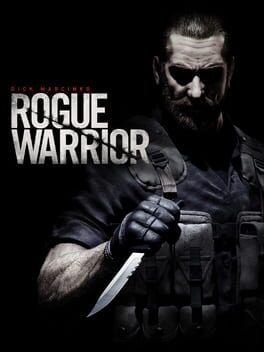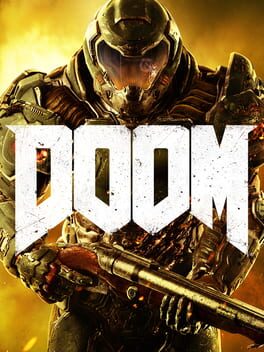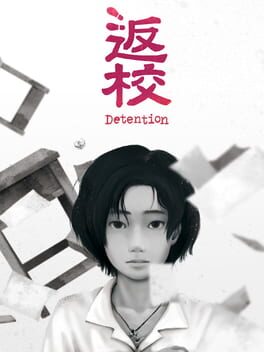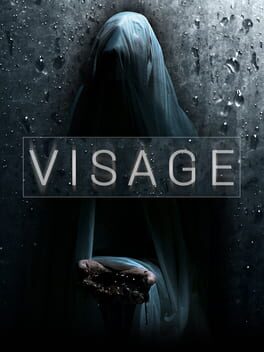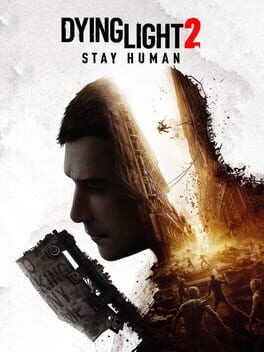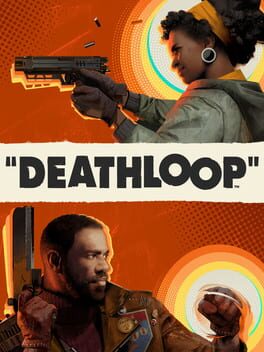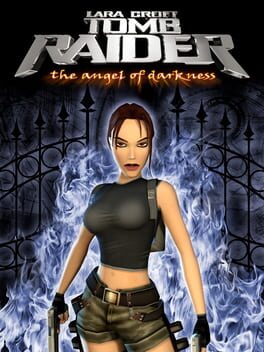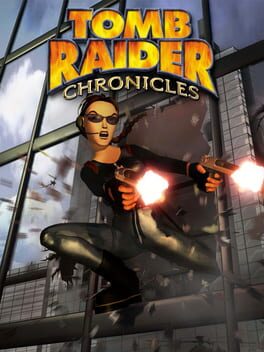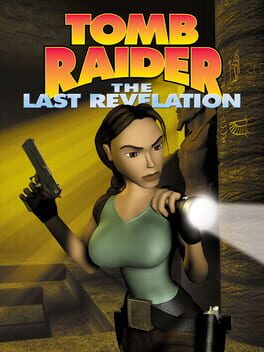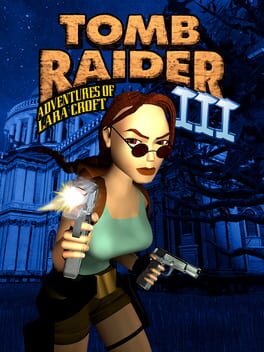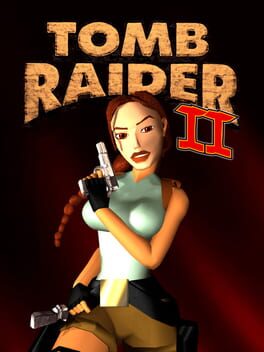cScarletter
2009
This game is basically a meme with how bad it is and it does live up to that legacy. However, I don't think it's the worst game ever made. Does it suck? Absolutely. But it works as a basic late 2000s FPS probably made in 6 months. The whole game is less than 2 hours and every mission is pretty much the same. It was a short game to get out of the backlog on my Steam Deck so it's good for that.
2016
2017
2020
Edit: I'm changing my review to not recommended. After like day 4, the missions start to repeat so it doesn't seem like there's an endgame. It gives you a bunch of wacky tools and allows you to steal vehicles to run people over. It's Domestic Terrorist Simulator 2020. If you're into games like Gmod you might enjoy this, but empty physics sandboxes like this get boring pretty quick to me.
[ORIGINAL REVIEW]
I honestly don't think this game is too bad. I thought there would be more minigames or something but so far it's just doing missions. The worst part about it is the fact there's no map which normally you could just learn the environment, but if you're outside of the school, good luck; everything looks the same.
There's certain missions where you have to find a certain item and it will tell you where (i.e "go to the music room"). These are manageable but for certain unlockables like the skateboard, it will show you a close-up of where it's at but that doesn't help at all and I still haven't found it.
TL;DR
It's not the greatest game ever, but it's not terrible either. Desperately needs a map and could do with some more side content.
[ORIGINAL REVIEW]
I honestly don't think this game is too bad. I thought there would be more minigames or something but so far it's just doing missions. The worst part about it is the fact there's no map which normally you could just learn the environment, but if you're outside of the school, good luck; everything looks the same.
There's certain missions where you have to find a certain item and it will tell you where (i.e "go to the music room"). These are manageable but for certain unlockables like the skateboard, it will show you a close-up of where it's at but that doesn't help at all and I still haven't found it.
TL;DR
It's not the greatest game ever, but it's not terrible either. Desperately needs a map and could do with some more side content.
2013
Tomb Raider (2013) is a pretty good and entertaining 20 or so hour game. It's unfortunately not as open-ended and puzzle solving based as the classic games, and other than the main story that involves shooting bad guys and watching cutscenes; the only other content are collectibles that give you XP and more story exposition. I tried 100%-ing the game but just found it too boring since audio tapes just expand on the story that already is pretty forgettable.
If you're looking for a good singleplayer game to sink a few days into for a reasonable price, you could do much worse than Tomb Raider.
If you're looking for a good singleplayer game to sink a few days into for a reasonable price, you could do much worse than Tomb Raider.
2017
2020
Note: I didn't finish the game. I played just under 2 hours. If you think that makes the review invalid, than so be it. In this review, I'll simply touch on what I thought of the game in the time I played. Slight spoilers, I suppose.
PROS
- The atmosphere. PT vibes. The opening scene, exploring the desolate house that seems abandoned yet always feels like there is someone else there. Fan-♥♥♥♥♥♥♥-tastic atmosphere.
- Sound design. The sudden bass hitting you in the head, the sounds of distant footsteps creaking the floor, and doors shutting at the other end of the house. Fantastic.
- It's a linear game, but you don't really feel like it is. Sometimes key items are in obtuse places that you won't find unless you're searching every nook and cranny. Really makes exploration feel rewarding.
CONS
- The scares. Very few, if any, games scare me. Maybe because I know it isn't real? Maybe because I know it doesn't matter if I get caught by this enemy because I'll be resurrected by the power of autosaves? I don't know for sure, but right around the time I stopped playing is when the first enemies get introduced and they just... weren't intimidating... at all. There is a severe lack of facial animation which really tears down the rest of the visual design, which for the most part is gorgeous.
- The sanity meter. God I hate these kind of mechanics. I recently played Amnesia for the first time and hated having to keep the lights on otherwise my character would go insane. It causes a real disconnect IMO. I have to light all these candles and flip all these switches because my character is scared of the dark. Sanity meters also just feel like artificial and forced scares on the player. "You should be scared because the character is scared. Nah. If anything, stuff like this just really reinforces the fact it's just a video game by making me watching a very "gamey" meter. I should want to turn the lights on because I am scared, not because the game is telling me I should be.
- A lack of combat. No, I'm not expecting to be able to find a gun and shoot every enemy that comes my way. I know this isn't that type of game and that's perfectly fine and I understand that. However, this sort of piggybacks of my previous con; it feels entirely gamey and artificially scary. If I get trapped in a tight corridor with nowhere to go, I just accept my fate, get killed, and reload a save. You should not be wanting to die in a horror game just to get a retry. I should have the ability to at least use simple weapons to defend myself from enemies. Make them unkillable and the weapons have durability. Make melee weapons simply stun them and allow you time to get away. That would be a good compromise IMO. Basically, humans when faced with a threat will fight back. Sure, they may run first, but backed into a corner with their choices are either to fight or die; they will fight. Totally removing this option from a player isn't scary. It's making your game artificially scary.
In Closing
I didn't read any reviews on Steam (mainly because they wouldn't load) and I didn't watch any videos about it. It's October and I was in the mood for a horror game. Multiple people and websites mentioned this as one of the "scariest games ever" and I'm just not seeing it. It plays a lot like Amnesia in a more modern setting with you manually opening doors and solving puzzles and whatnot which sounds like a plus, because it is. But unfortunately, it also plays like Amnesia in that the game is forcing you to be "scared" with a sanity meter, light sources, and zero combat whatsoever. Like I said before, the atmosphere is top notch but the horror gameplay, what I bought it for, just isn't there.
Tl;dr This game just isn't scary at all, and it's over-reliance on making you scared by telling you "You should be scared" is just really lazy and bad design for a horror game.
PROS
- The atmosphere. PT vibes. The opening scene, exploring the desolate house that seems abandoned yet always feels like there is someone else there. Fan-♥♥♥♥♥♥♥-tastic atmosphere.
- Sound design. The sudden bass hitting you in the head, the sounds of distant footsteps creaking the floor, and doors shutting at the other end of the house. Fantastic.
- It's a linear game, but you don't really feel like it is. Sometimes key items are in obtuse places that you won't find unless you're searching every nook and cranny. Really makes exploration feel rewarding.
CONS
- The scares. Very few, if any, games scare me. Maybe because I know it isn't real? Maybe because I know it doesn't matter if I get caught by this enemy because I'll be resurrected by the power of autosaves? I don't know for sure, but right around the time I stopped playing is when the first enemies get introduced and they just... weren't intimidating... at all. There is a severe lack of facial animation which really tears down the rest of the visual design, which for the most part is gorgeous.
- The sanity meter. God I hate these kind of mechanics. I recently played Amnesia for the first time and hated having to keep the lights on otherwise my character would go insane. It causes a real disconnect IMO. I have to light all these candles and flip all these switches because my character is scared of the dark. Sanity meters also just feel like artificial and forced scares on the player. "You should be scared because the character is scared. Nah. If anything, stuff like this just really reinforces the fact it's just a video game by making me watching a very "gamey" meter. I should want to turn the lights on because I am scared, not because the game is telling me I should be.
- A lack of combat. No, I'm not expecting to be able to find a gun and shoot every enemy that comes my way. I know this isn't that type of game and that's perfectly fine and I understand that. However, this sort of piggybacks of my previous con; it feels entirely gamey and artificially scary. If I get trapped in a tight corridor with nowhere to go, I just accept my fate, get killed, and reload a save. You should not be wanting to die in a horror game just to get a retry. I should have the ability to at least use simple weapons to defend myself from enemies. Make them unkillable and the weapons have durability. Make melee weapons simply stun them and allow you time to get away. That would be a good compromise IMO. Basically, humans when faced with a threat will fight back. Sure, they may run first, but backed into a corner with their choices are either to fight or die; they will fight. Totally removing this option from a player isn't scary. It's making your game artificially scary.
In Closing
I didn't read any reviews on Steam (mainly because they wouldn't load) and I didn't watch any videos about it. It's October and I was in the mood for a horror game. Multiple people and websites mentioned this as one of the "scariest games ever" and I'm just not seeing it. It plays a lot like Amnesia in a more modern setting with you manually opening doors and solving puzzles and whatnot which sounds like a plus, because it is. But unfortunately, it also plays like Amnesia in that the game is forcing you to be "scared" with a sanity meter, light sources, and zero combat whatsoever. Like I said before, the atmosphere is top notch but the horror gameplay, what I bought it for, just isn't there.
Tl;dr This game just isn't scary at all, and it's over-reliance on making you scared by telling you "You should be scared" is just really lazy and bad design for a horror game.
I had my fun with the game and put around 60 or so hours into it. But after finishing the main story and with all the weekly events, boosters, NG+, etc; I still have no incentive to go back. On it's own, the game is fine, but compared to Dying Light 1 it is a downgrade in a multitude of ways: The combat has lost all it's weight and enemies don't seem to react at all to melee weapons, even after the physics update. It's also one of those games built around a "gear level" so you're constantly chasing that higher number. The first game had a system like this too, but here it just feels very... Ubisoft. The world is fun to explore with a reworked grappling hook and paraglider. Lots of quests make good use around the parkour which is primarily where most of the fun comes in this game.
This game has a lifespan of at least 5 years and while I bought it at launch, I haven't really played it much since the initial week or so after release. I would recommend waiting for a sale or to see if they work to improve some of the more annoying gameplay design elements first. Never played co-op so I can't comment on that.
tl;dr it's an alright game, but you'll get more bang for your buck and overall enjoyment out of Dying Light 1 imo
This game has a lifespan of at least 5 years and while I bought it at launch, I haven't really played it much since the initial week or so after release. I would recommend waiting for a sale or to see if they work to improve some of the more annoying gameplay design elements first. Never played co-op so I can't comment on that.
tl;dr it's an alright game, but you'll get more bang for your buck and overall enjoyment out of Dying Light 1 imo
2021
I got this game as part of the November 2022 Humble Choice. As a fan of the Dishonored games, I probably would've picked it up eventually but either way, I'm glad I gave this game a go.
At it's base level, the game has the same general gameplay foundations as Dishonored, but where it varies greatly is in it's unique time-loop gimmick. After a tutorial section that lasts roughly 2 hours or so that serves as an explanation of the loop and after gaining the ability to save your weapons and abilities at the end of the day, the core of the game begins.
This game is almost like a rouge-like, but not quite. There are only four levels in the entire game which may not like seem much, but you spend the entire game going between the four levels in any order you choose and learning the ins and outs of the level, where important things are, and how to kill Visionaries without dying yourself.
On paper, this game is very repetitive. You start the day, you go to Location A in the morning to gather some info and leave. Go to Location C at noon, kill someone for an upgrade, leave. Go to Location B in the evening, gather some info, and leave. But unless you're playing the game wrong or hunting Visionaries, you are unlikely to do the same exact thing twice.
This game is good fun and if you have Humble Choice, it's free this month and definitely worth your time. If you don't or missed the window, well, it's definitely still worth your time. You can't go wrong with Deathloop.
At it's base level, the game has the same general gameplay foundations as Dishonored, but where it varies greatly is in it's unique time-loop gimmick. After a tutorial section that lasts roughly 2 hours or so that serves as an explanation of the loop and after gaining the ability to save your weapons and abilities at the end of the day, the core of the game begins.
This game is almost like a rouge-like, but not quite. There are only four levels in the entire game which may not like seem much, but you spend the entire game going between the four levels in any order you choose and learning the ins and outs of the level, where important things are, and how to kill Visionaries without dying yourself.
On paper, this game is very repetitive. You start the day, you go to Location A in the morning to gather some info and leave. Go to Location C at noon, kill someone for an upgrade, leave. Go to Location B in the evening, gather some info, and leave. But unless you're playing the game wrong or hunting Visionaries, you are unlikely to do the same exact thing twice.
This game is good fun and if you have Humble Choice, it's free this month and definitely worth your time. If you don't or missed the window, well, it's definitely still worth your time. You can't go wrong with Deathloop.
2006
Tomb Raider: Legend was the first game in the series not developed by the original team at Core Design and it's quite evident throughout this game. While Core games felt often as if Lara was exploring large tombs and ancient cities untouched for thousands of years in solitude, this game doesn't quite go for that approach, but it's not necessarily a bad thing: just different.
For example, a level in the original 4 Tomb Raider games could often take you upwards of an hour to finish as you often would waste plenty of time looking for that one single switch or lever, this game doesn't do that. It has puzzles, sure, but they are typically very easy and only involve moving a block around to stop a trap or place on a pressure plate.
TR: Legend more often than not feels more like the Hollywood adaption of the original Tomb Raider series, replacing slow exploration, puzzle solving, and the occasional shootout with the more railroaded levels with tons of things to shoot and blow up. Again, not a bad thing but it is worth noting that this game shares very little with the previous games. Also a good time to mention this is a reboot so the Lara here is not the same one as before which is noticeable because she talks a lot more than before and has a team of help always providing information via headset, which definitely diminishes a lot of the feeling of exploration.
Good game. Finished the main story in just under 7 hours so there's definitely worse ways to spend an afternoon.
For example, a level in the original 4 Tomb Raider games could often take you upwards of an hour to finish as you often would waste plenty of time looking for that one single switch or lever, this game doesn't do that. It has puzzles, sure, but they are typically very easy and only involve moving a block around to stop a trap or place on a pressure plate.
TR: Legend more often than not feels more like the Hollywood adaption of the original Tomb Raider series, replacing slow exploration, puzzle solving, and the occasional shootout with the more railroaded levels with tons of things to shoot and blow up. Again, not a bad thing but it is worth noting that this game shares very little with the previous games. Also a good time to mention this is a reboot so the Lara here is not the same one as before which is noticeable because she talks a lot more than before and has a team of help always providing information via headset, which definitely diminishes a lot of the feeling of exploration.
Good game. Finished the main story in just under 7 hours so there's definitely worse ways to spend an afternoon.
To preface this review, I want to say that prior to playing this game, I played each prior Tomb Raider in release order, so Tomb Raider 1 - Chronicles. I knew well before starting this that Angel of Darkness was the black sheep in the franchise, the undeniable worst entry, and just a bad game in general. Now that I have finally played the game for myself, I can undoubtedly that this game lives up to it's reputation tenfold and just might be one of the worst games I've ever played.
The problems surrounding this game's development and resulting downfall of Core Design are well-documented already so I won't be wasting time with that. Instead of reviewing the game that could have been, I will try to focus solely on the game we got: a game best described as a broken, unfinished, disjointed mess.
Within the first five minutes of starting Angel of Darkness, you will notice three things right off the bat.
1.) The controls have changed for seemingly no reason
2.) The game is no longer built on "blocks"
3.) Lara somehow controls even worse than before
1 and 3 are ultimately the biggest pitfall with this game as it constantly is in flux with maintaining a worse version of 1-5's tank controls, while also trying to make the levels themselves more complex, the latter of which the game fails at more often than not. For example, many levels in this game house only very small sections with difficult platforming or a puzzle in which the solution is often in the exact same room that the puzzle is.
During the game's first few levels, I honestly thought it had potential. It didn't feel as good as the prior games but the levels themselves were interesting enough to disguise it. The Louvre and Hall of Seasons levels in particular are highlights, which are in the first half of the game. The latter half of the game is not worth talking about at all. If the game was nothing but the latter half, this game would honestly have zero saving graces. This game introduces a new playable character, Kurtis Trent, who adds nothing, literally nothing of value to the story at all. He controls exactly like Lara and only appears for 2 out of 29 levels. The story would be exactly the same had he not been in it.
The absolute worst part of this game is the bugs. The last two games had a few bugs that could be solved with a reload but this game has game-breaking games all over the place. Two major bugs I encountered were my notebook disappearing entirely. Certain puzzles rely on it, and it just completely erased itself from my inventory, forcing me to look online. Speaking of the inventory, after the first Kurtis mission you return to Lara. When I reached this point, I lost every single weapon and health kit I had encountered up to this point, forcing me to complete the rest of the game without ammo or health (pickups became extremely rare). The game does introduce melee but like everything else in this game. It sucks and it sucks really, really bad.
Ultimately, this game is just a mish-mash of half-finished ideas, crappy levels, and a story that is borderline engaging but mostly just boring and forgettable. As the final Core Design Tomb Raider game, this was the worst possible scenario for a send-off. Play it to form your own opinion if it's as bad as people say but absolutely do not go in expecting some kind of underrated gem as even with fan-patches, this game is just bad bad bad.
The problems surrounding this game's development and resulting downfall of Core Design are well-documented already so I won't be wasting time with that. Instead of reviewing the game that could have been, I will try to focus solely on the game we got: a game best described as a broken, unfinished, disjointed mess.
Within the first five minutes of starting Angel of Darkness, you will notice three things right off the bat.
1.) The controls have changed for seemingly no reason
2.) The game is no longer built on "blocks"
3.) Lara somehow controls even worse than before
1 and 3 are ultimately the biggest pitfall with this game as it constantly is in flux with maintaining a worse version of 1-5's tank controls, while also trying to make the levels themselves more complex, the latter of which the game fails at more often than not. For example, many levels in this game house only very small sections with difficult platforming or a puzzle in which the solution is often in the exact same room that the puzzle is.
During the game's first few levels, I honestly thought it had potential. It didn't feel as good as the prior games but the levels themselves were interesting enough to disguise it. The Louvre and Hall of Seasons levels in particular are highlights, which are in the first half of the game. The latter half of the game is not worth talking about at all. If the game was nothing but the latter half, this game would honestly have zero saving graces. This game introduces a new playable character, Kurtis Trent, who adds nothing, literally nothing of value to the story at all. He controls exactly like Lara and only appears for 2 out of 29 levels. The story would be exactly the same had he not been in it.
The absolute worst part of this game is the bugs. The last two games had a few bugs that could be solved with a reload but this game has game-breaking games all over the place. Two major bugs I encountered were my notebook disappearing entirely. Certain puzzles rely on it, and it just completely erased itself from my inventory, forcing me to look online. Speaking of the inventory, after the first Kurtis mission you return to Lara. When I reached this point, I lost every single weapon and health kit I had encountered up to this point, forcing me to complete the rest of the game without ammo or health (pickups became extremely rare). The game does introduce melee but like everything else in this game. It sucks and it sucks really, really bad.
Ultimately, this game is just a mish-mash of half-finished ideas, crappy levels, and a story that is borderline engaging but mostly just boring and forgettable. As the final Core Design Tomb Raider game, this was the worst possible scenario for a send-off. Play it to form your own opinion if it's as bad as people say but absolutely do not go in expecting some kind of underrated gem as even with fan-patches, this game is just bad bad bad.
This review contains spoilers
Tomb Raider: Chronicles is the fifth Tomb Raider game for fifth straight year and it shows. It's also the final of the "classic" PS1 style Tomb Raider games.
In terms of story, Tomb Raider IV-VI are connected but this game does nothing to advance the overarching plot in the slightest. After the events of Tomb Raider IV in which Lara "dies", her friends reflect back on her past adventures, leading this game to function like a "Greatest Hits" of sorts. This leads to the plot feeling disconnected, well, because it is. None of the locations lead to the next in an organic way, it's just "Lara was here, she did this" and then "Lara went here and did that". This also means that collecting gear along the way is no longer something you're incentivized to do as after the story is over, Lara's gear is reset meaning you lose all ammo, health-packs, etc.
In terms of scope and scale, this game is by far the smallest and shortest Tomb Raider game in the original Core PS1 pentalogy. While Tomb Raider I and II could be finished in around 20-ish hours for a first playthrough, III and IV at around 30, Chronicles dwarfs all of these with a story that can be seen to completion in 12 hours or less. This is largely due to the fact that levels are much smaller and linear than ever before. I don't think I recall a single time where I found a locked door and couldn't immediately find the key in the same room or next room over.
There are very few times you'll ever get stuck in this game due to a complex puzzle. In fact, the only time you'll likely hit something difficult is the final level which ramps up the difficulty astronomically while also leaving you with minimal health packs and ammo. The game introduces stealth as a way to stay concealed and conserve ammo but to call this feature half-baked would be an understatement. You can gather chloroform and rags to incapacitate enemies but this action is either extremely situational or outright broken: I could never quite determine which.
Chronicles doesn't do anything mind-blowing or innovative to improve on the already solid Tomb Raider formula. In fact, it dials a lot of it down, making for a very, very brief game that manages to still have some memorable moments that hearken back to the first three games without doing much to challenge you as a player.
In terms of story, Tomb Raider IV-VI are connected but this game does nothing to advance the overarching plot in the slightest. After the events of Tomb Raider IV in which Lara "dies", her friends reflect back on her past adventures, leading this game to function like a "Greatest Hits" of sorts. This leads to the plot feeling disconnected, well, because it is. None of the locations lead to the next in an organic way, it's just "Lara was here, she did this" and then "Lara went here and did that". This also means that collecting gear along the way is no longer something you're incentivized to do as after the story is over, Lara's gear is reset meaning you lose all ammo, health-packs, etc.
In terms of scope and scale, this game is by far the smallest and shortest Tomb Raider game in the original Core PS1 pentalogy. While Tomb Raider I and II could be finished in around 20-ish hours for a first playthrough, III and IV at around 30, Chronicles dwarfs all of these with a story that can be seen to completion in 12 hours or less. This is largely due to the fact that levels are much smaller and linear than ever before. I don't think I recall a single time where I found a locked door and couldn't immediately find the key in the same room or next room over.
There are very few times you'll ever get stuck in this game due to a complex puzzle. In fact, the only time you'll likely hit something difficult is the final level which ramps up the difficulty astronomically while also leaving you with minimal health packs and ammo. The game introduces stealth as a way to stay concealed and conserve ammo but to call this feature half-baked would be an understatement. You can gather chloroform and rags to incapacitate enemies but this action is either extremely situational or outright broken: I could never quite determine which.
Chronicles doesn't do anything mind-blowing or innovative to improve on the already solid Tomb Raider formula. In fact, it dials a lot of it down, making for a very, very brief game that manages to still have some memorable moments that hearken back to the first three games without doing much to challenge you as a player.
Edit: I did end up going back to finish this game. It definitely has it's moments, but ultimately is far, far too long for it's own good and has way too much needless backtracking.
At the time of writing, I have around 20 hours in this game which if the previous three games are anything to go by, I should be around 2/3 of the way through this game. While all the prior games had their fair mix of fantastic level designs, mixed with convoluted and honestly sometimes annoying puzzle design, Tomb Raider IV: The Last Revelation just goes too far with the puzzles. With that being said, I don't think this game is nearly as enjoyable as the original trilogy and think I'll be dropping it for now.
First off what I've read, this game runs in a new engine which if you go directly from 3 to 4, is noticeable. Sure, Lara still controls like a tank but the levels in this game have much more polygons and relies less on the grid-design of the past games. This works fantastic in making more believable and interesting level designs but does occasionally lead to Lara getting stuck in the ground/walls more often. There were also 2 game-breaking bugs I encountered in the Alexandria and Cairo levels where I needed to reload saves to continue. One involved water not filling an area I needed to swim in and ice wraiths not turning water I needed to walk on into ice. Both were fixed by loading an old save and doing things different, but I never encountered bugs like these in prior games.
Undoubtedly the biggest change in this game is the fact the levels are now inter-connected. There is no Croft Manor level in this game so that functionality is now replaced by a mandatory tutorial level. With the exception of this and possibly later levels (I didn't finish the game), each area can consist of anywhere from 3-7 different levels. At first this seems great as in the first area, levels are fairly linear so if you need to backtrack, it's not difficult to do. Tedious, yes, but do-able.
However, once you get to Alexandria and Cairo (the level I gave up on this game), the amount of backtracking becomes unbearable if you don't make sure to grab every key item before moving on, an impossible task if you're playing this for the first time, obviously. I found myself very often searching every nook and cranny in a level, only to decide that I must be missing an item and go somewhere else to look for it. This would take me hours of running in circles before I would cave-in and use a guide. It's when I used a guide, I would discover that I missed 3 key items in Level 1 and another in Level 2. So in missing 4 items, I would have to backtrack to each of these levels and perform a separate puzzle to obtain each of these items, just so I could progress in Level 3, which would give me an item I need to unlock Level 4 which can only be accessed in Level 2. See why this is confusing? The game's puzzles basically can be described as:
Find Item A, B in Level 1 -- > Unlock door in Level 2 -- > Retrieve key that goes to a door in level 3 -- > Get another key to unlock another level in Level 1
I felt like I was crippling myself by not following a guide the entire time playing this game and if I am constantly needing a hint as to where to go, the game just isn't fun. Maybe I'll pick this game back up in the future but for now, I'm going to move on to AoD as this game even soured me off of Chronicles for the time being.
At the time of writing, I have around 20 hours in this game which if the previous three games are anything to go by, I should be around 2/3 of the way through this game. While all the prior games had their fair mix of fantastic level designs, mixed with convoluted and honestly sometimes annoying puzzle design, Tomb Raider IV: The Last Revelation just goes too far with the puzzles. With that being said, I don't think this game is nearly as enjoyable as the original trilogy and think I'll be dropping it for now.
First off what I've read, this game runs in a new engine which if you go directly from 3 to 4, is noticeable. Sure, Lara still controls like a tank but the levels in this game have much more polygons and relies less on the grid-design of the past games. This works fantastic in making more believable and interesting level designs but does occasionally lead to Lara getting stuck in the ground/walls more often. There were also 2 game-breaking bugs I encountered in the Alexandria and Cairo levels where I needed to reload saves to continue. One involved water not filling an area I needed to swim in and ice wraiths not turning water I needed to walk on into ice. Both were fixed by loading an old save and doing things different, but I never encountered bugs like these in prior games.
Undoubtedly the biggest change in this game is the fact the levels are now inter-connected. There is no Croft Manor level in this game so that functionality is now replaced by a mandatory tutorial level. With the exception of this and possibly later levels (I didn't finish the game), each area can consist of anywhere from 3-7 different levels. At first this seems great as in the first area, levels are fairly linear so if you need to backtrack, it's not difficult to do. Tedious, yes, but do-able.
However, once you get to Alexandria and Cairo (the level I gave up on this game), the amount of backtracking becomes unbearable if you don't make sure to grab every key item before moving on, an impossible task if you're playing this for the first time, obviously. I found myself very often searching every nook and cranny in a level, only to decide that I must be missing an item and go somewhere else to look for it. This would take me hours of running in circles before I would cave-in and use a guide. It's when I used a guide, I would discover that I missed 3 key items in Level 1 and another in Level 2. So in missing 4 items, I would have to backtrack to each of these levels and perform a separate puzzle to obtain each of these items, just so I could progress in Level 3, which would give me an item I need to unlock Level 4 which can only be accessed in Level 2. See why this is confusing? The game's puzzles basically can be described as:
Find Item A, B in Level 1 -- > Unlock door in Level 2 -- > Retrieve key that goes to a door in level 3 -- > Get another key to unlock another level in Level 1
I felt like I was crippling myself by not following a guide the entire time playing this game and if I am constantly needing a hint as to where to go, the game just isn't fun. Maybe I'll pick this game back up in the future but for now, I'm going to move on to AoD as this game even soured me off of Chronicles for the time being.
This game has some great moments and is overall an enjoyable experience, but get used to save-scumming... a lot. There is a difference between placing hazards the player can see beforehand and plan ahead vs. hazards that come literally out of nowhere. You might avoid one and feel accomplished, only for seconds later be steamrolled by a boulder, burnt to a crisp by flames, or fall to your death after inadvertently standing on the wrong tile.
The game thankfully tones down the amount of action (i.e enemies with guns) featured in Tomb Raider II, while also not making it a pure exploration game, as there is still plenty of guns to collect and enemies to shoot.
For the most part, the levels in this game were enjoyable and straightforward enough that after a fair bit of exploration, you could find the next piece of the puzzle you needed to progress without feeling totally lost. The London section in particular houses maybe the worst level in the original trilogy: Aldwych, a level so convoluted an maze-like, it took me nearly 3 hours to finish in a game where I was averaging maybe ~1 hour per level.
I still recommend this game primarily since if you're looking into it, you've probably already played the first two, since it doesn't make much sense to start here. Story or gameplay wise since the developers definitely expect you to be familiar with these games by now leading to a punishing game more often than not.
tl;dr
Playing the games in order? Good game, don't skip it.
Sitting in your library? Start with 1 and 2 first to ease into the series. If they're not for you, 3 100% will not be and just move onto the LAU games.
The game thankfully tones down the amount of action (i.e enemies with guns) featured in Tomb Raider II, while also not making it a pure exploration game, as there is still plenty of guns to collect and enemies to shoot.
For the most part, the levels in this game were enjoyable and straightforward enough that after a fair bit of exploration, you could find the next piece of the puzzle you needed to progress without feeling totally lost. The London section in particular houses maybe the worst level in the original trilogy: Aldwych, a level so convoluted an maze-like, it took me nearly 3 hours to finish in a game where I was averaging maybe ~1 hour per level.
I still recommend this game primarily since if you're looking into it, you've probably already played the first two, since it doesn't make much sense to start here. Story or gameplay wise since the developers definitely expect you to be familiar with these games by now leading to a punishing game more often than not.
tl;dr
Playing the games in order? Good game, don't skip it.
Sitting in your library? Start with 1 and 2 first to ease into the series. If they're not for you, 3 100% will not be and just move onto the LAU games.
1997
